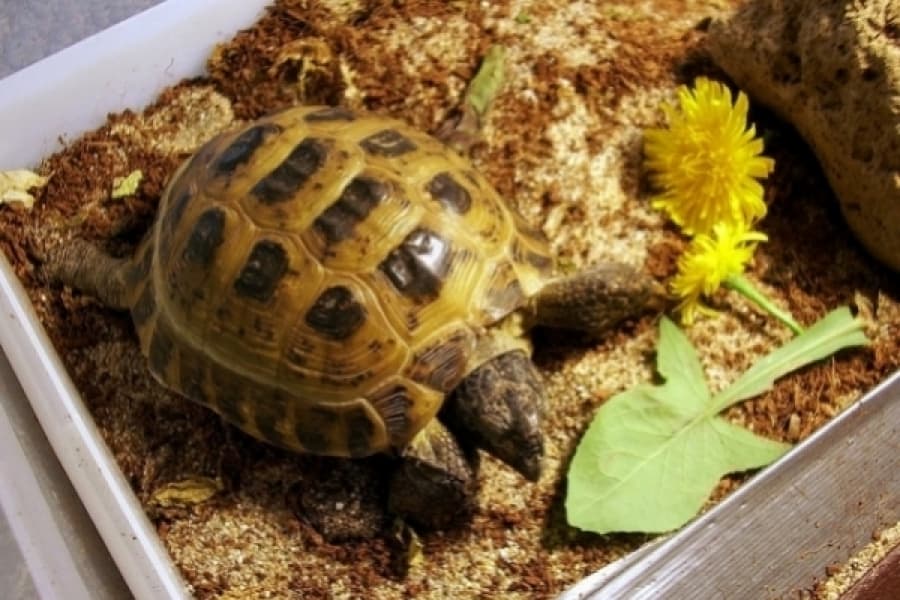
Scientific Name
- The scientific name of the Russian Tortoise is Agrionemys horsfieldii.
- It was formerly known as Testudo horsfieldii.
Description
- It also has the generic name of Russian Tortoise, Central Asian Tortoise, Four-Toed Tortoise, Afghanistan Tortoise, Horsfield’s Tortoise, and Steppe Tortoise.
- The Russian Tortoise, or Afghanistan Tortoise, is one of the most famous and popular tortoises in the world.
Distribution
- These tortoises are mostly found in Middle Eastern countries such as Uzbekistan, Afghanistan, Kazakhstan, Iran, and some areas in North Western China.
- Naturally can be found near hillsides, rocky deserts, and sandy or loamy steppes.
Breeding
- Mating is actively done during the summer season (mid of March to mid of June, naturally).
Nesting
- They lay 2 to 6 eggs per clutch.
- There are up to 3 clutches per season.
- Incubation takes 80 to 110 days at a constant 30.5ºC.
- Hatchling happens in August or September in the natural habitat.
- Russian babies are measured at around 32mm to 34mm in length.
Size
- Russian tortoises can grow up to 6 – 8 inches in size.
Life Span
- Around 50 years old.
Diet
- High fiber, low protein, and calcium-rich food are necessary.
- Russian Tortoise loves leaves, grasses, weeds, vegetables, and flowers.
- Since the tortoise hibernates during winter and tends to eat a lot during summer.
- You’ll find out that if you keep them indoors, they’ll eat lots all year long.
- This will create improper growth for the tortoise.
- The recommendation is to feed them 30 minutes a day as to how much they can eat and stop feeding them.
- Please be reminded that the food much be varied, do not feed them the same food everyday.
- Mix up hoya plants and green plants (Endive, Romaine lettuce, etc).
- Different mixing preferably everyday.
- Try not to feed them with fruits, grains, or animal protein food.
- Mixing the food with vitamin D3 power or calcium supplement is highly recommended.
- A dish of water should be provided at all times.
Habitat
- This kind of tortoise prefers open dry landscaping.
- The tortoise is an expert burrow digger.
- Naturally, Russian Tortoises hibernate during winter or cold weather.
- The tortoises are very active from mid of March to mid of June (summer season).
- Estivation or aestivation does happen during the summer.
- In summer, they forage.
- At temperature of 21ºC to 31ºC, the tortoise is found most active.
- Hibernation is from October to March in Uzbekistan.
- Dry and sparse bushes or grasses.
Common Disease
- Improper growth if diet is not controlled well.
Vivarium and Housing
- Prevent damp if you keep them outdoor.
- Indoor housing must be large enough for their movement, at least 3 feet by 4 feet enclosure.
- Temperature should be controlled with basking spot at around 31ºC and a cooler spot with a hide box.
